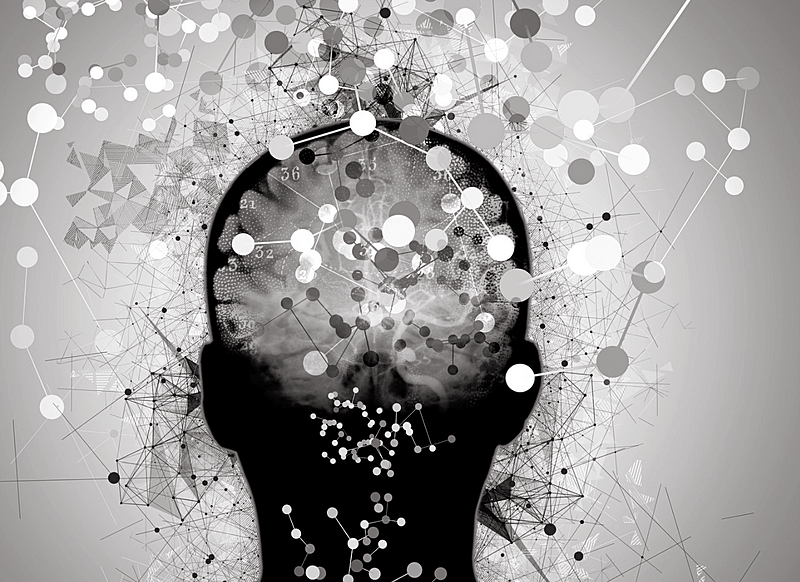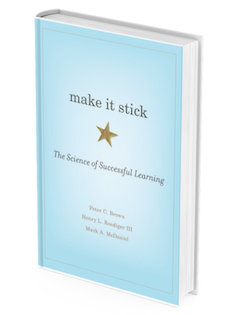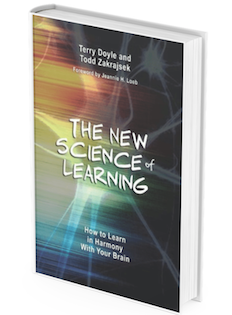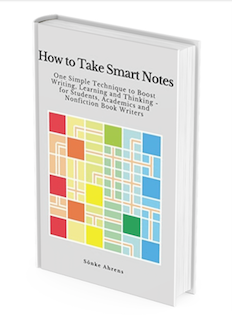These resources can help you expand your brain.

“Reading is a basic tool in the living of a good life,” Mortimer J. Adler said. I disagree.
Books don’t magically make you live the good life. You can read a book a week without changing at all.
Reading doesn’t help you per se — it’s reading the right books that can make all the difference.
No life skill can earn you greater dividends than learning how to learn. After reading more than 30 books on learning, these three are my favorite picks on meta-learning.
Every single one will help you understand how your brain learns. By doing so, you’ll make better decisions and find yourself on your journey to wisdom.
1) Make it Stick
Did you know rereading and highlighting are the most popular yet the least productive learning strategies?
Revisiting concepts and ideas might feel like learning because you recognize some of them. But you’re not learning. You’re trapped in an illusion of knowledge.
Mastering a text is different from recalling or remembering what you read.
“People commonly believe that if you expose yourself to something enough times, you can burn it into memory,” the authors write.
They also why it’s not worth it: “Rereading has three strikes against it. It is time-consuming. It doesn’t result in durable memory. And it often involves a kind of unwitting self-deception, as growing familiarity with the text comes to feel like mastery with the content.”
I used to think learning should feel easy. Slow and difficult meant unproductive. Turns out I was wrong.
Effective learning must feel hard: “Learning is deeper and more durable when it’s effortful. Learning that’s easy is like writing in sand, here today and gone tomorrow.”
‘Make it Stick’ doesn’t stop after dismantling learning myths.
The research group around neuroscientist Henry Roediger and psychologist Mark McDaniel spent ten years exploring learning strategies. Their goal was to bridge the gap between cognitive science and educational science.
Here are some powerful concepts from the book explores:
- Your brain’s capacity is unlimited. Contrary to common belief, our brains are never full. The more we learn, the more we can remember. Learning is a virtuous circle. The more cues we have, the easier it is to encode new information to these cues. As long as you connect further information to existing brain branches, you can store much more than you think.
- To learn, you first need to forget. I always thought forgetting is a character’s flaw. But it isn’t. Forgetting is necessary for new learning. That’s why spaced repetition is among the most effective learning strategies. You allow forgetting to occur and thereby strengthen your memory.
- The power of reflection. Reflecting leads to stronger learning. To reflect, you need to retrieve, connect, and visualize earlier memories. Often, you mentally practice what you’d do the next time differently. That’s why regular thinking breaks are so valuable.
Last but not least, ‘Make it Stick’ summarizes six evidence-based, application-ready strategies that help you learn better and store new knowledge in your long-term memory.
The six strategies include retrieval practice (recall something you’ve learned in the past from your memory), spaced repetition (repeat the same piece of information across increasing intervals), interleaving (alternating before each practice is complete), elaboration (rephrasing new knowledge and connecting it with existing insights), reflection (synthesize, abstract, and articulate key lessons taught by experience), self-testing & calibration (answer a question or solve a problem before looking at the answer and identify knowledge gaps).

“Mastery, especially of complex ideas, skills and processes, is a quest. Don’t assume you’re doing something wrong if learning feels hard.”
2) The New Science of Learning
This book should be mandatory for students, teachers, and anyone who wants to learn. It’s based on state-of-the-art science about how the human brain learns. It will help you make learning more effective and teaches how you can retain knowledge and skills for a lifetime.
Similar to the ‘Make it Stick,’ the authors reveal common ineffective learning methods. The authors agree on many levels: “New learning requires a considerable amount of practice and a meaningful connection to other information in order to become a more permanent part of memory.”
To learn effectively, you need to use new information to form meaningful connections to other information. That’s why a multi-dimensional learning experience that involves many senses is effective.
Listen, talk, read, write, and think about the new material at hand to make learning more effective. The more work your brain does, the more connections you establish. And as you know, more connections increase the chances that you remember what you learn.
But it’s not only the learning itself that can improve your memory:
- Sleep. During sleep, your brain cells shrink, and fluid can wash the toxins out. Sleep is your brain’s way of keeping itself clean and healthy. While sleeping, you strengthen the learning of your day.
- Movement. Various studies attest to the importance of exercise for learning ability. Move your body to learn better.
- Environment. A distracted brain can’t study. Prepare your environment for maximum focus. Go to a study room, turn off your phone, and eliminate any other distraction.

“Learning and memory have two key components: the learned object itself and the retrieval cue to find the learned object.”
3) How to Take Smart Notes
Do you finish a book or an article and think you’ve found great insights but don’t know what to do with them?
I read a lot, but I struggled to manage the input and my ideas for creative output. While writing an article, I often remembered I read something related but couldn’t find the source.
As Ahrens writes: “Having read more does not automatically mean having more ideas.”
Taking smart notes is the fast track to improve your productivity and creativity. Yet, most note-taking systems are ineffective.
This is one of the books that has forever changed the way I learn. Before, I didn’t know the difference between note-taking, note-making, and note-hierarchies.
‘How to Take Smart Notes’ transformed the way I store and manage what I read. It helped me realize a learning workflow can turn into a virtuous circle.
The idea is not to hoard knowledge but to develop ideas, arguments, and discussions, and the method he describes is called the slipbox.
Niklas Luhmann, a social scientist, invented the slipbox. He wrote 73 books and almost 400 research articles on various topics during his life, including politics, art, ecology, media, law, and the economy.
When someone asked him how he published so much, Luhmann replied, “I’m not thinking everything on my own. Much of it happens in my Zettelkasten. My productivity is largely explained by the Zettelkasten method”.
The slipbox is a fantastic learning tool as it forces us to use all the strategies known for effective learning.
When you read the book, you’ll marvel at sentences like: “We learn something not only when we connect it to prior knowledge and try to understand its broader implications (elaboration), but also when we try to retrieve it at different times (spacing) in different contexts (variation), ideally with the help of chance (contextual interference) and with a deliberate effort (retrieval).”
I love how Sönke Ahrens describes Luhmann’s Zettelkasten method and embeds it into the science of learning. It’s like “Make it Stick” applied to note-taking. This book will forever change the way you take notes.

“To seek as many opportunities to learn as possible is the most reliable long-term growth strategy.”
Want to feel inspired and improve your learning?
Subscribe free to The Learn Letter. I read a book and 50 articles a week, and each Wednesday, you’ll receive the best in your inbox. This newsletter will make you find tools and resources that help you on your path to health, wealth, and wisdom.